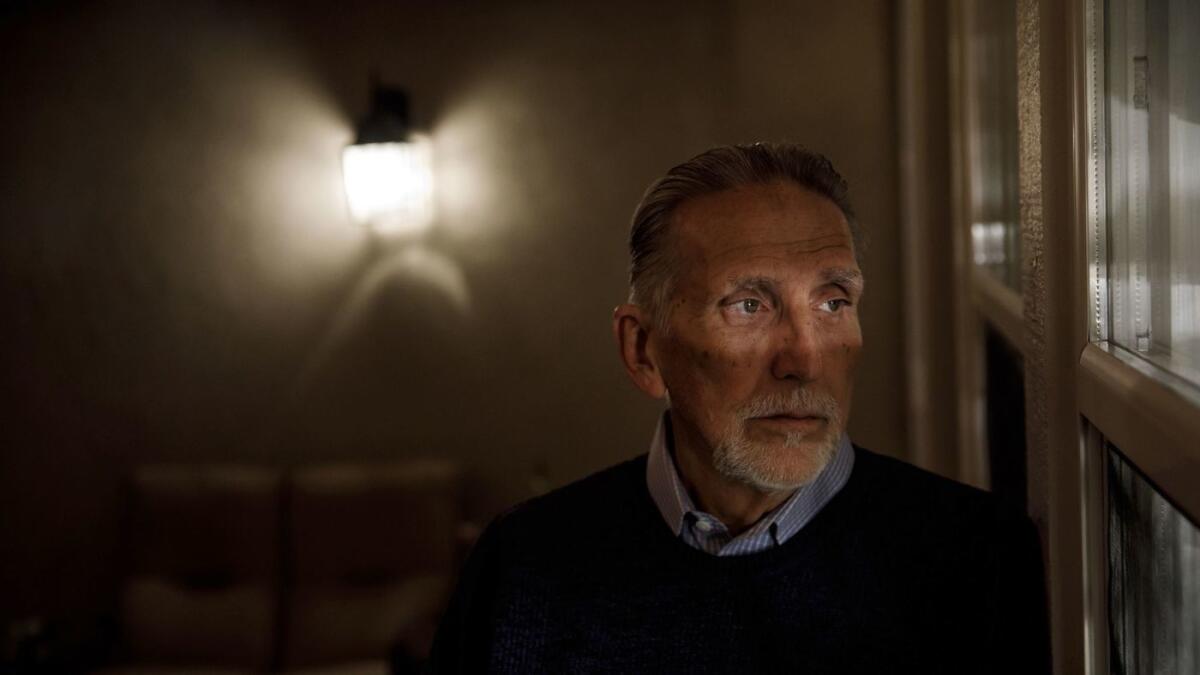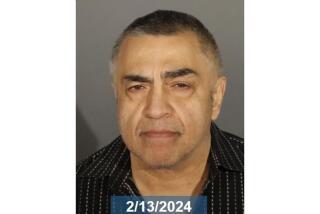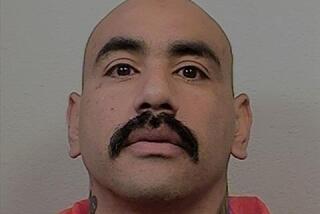Arrest of Golden State Killer suspect could unlock other cold case mysteries

Why did the Sacramento attacker suddenly veer south?
Since freeing a man last year who spent more than 38 years behind bars for a grisly double murder he didnât commit, Simi Valley police detectives have been searching for the real killer.
So when they heard last week that Joseph James DeAngelo had been arrested on suspicion of being the Golden State Killer, their interest was piqued.
It was a long shot, they thought, but the way he allegedly carried out 12 slayings was similar enough to the Simi Valley murders in 1978 â and within the same time frame â that it might be he was responsible.
âRight now anything is possible,â said Simi Valley Deputy Police Chief Joseph May.
The agency joins cold-case investigators across California who are reexamining unsolved homicides with the Golden State Killer suspect in mind â a move May said is standard procedure when new information comes to light.
In Simi Valley, a DNA comparison is in the works, though the process can take weeks or months depending on the crime labâs workload.
âOnce we do a side-by-side comparison, weâll be able to tell fairly quickly whether or not heâs involved,â May said. Detectives are still chasing other leads, and if anything, hope to at least eliminate DeAngelo as a possible suspect.
Before his arrest, DeAngelo, 72, wasnât on the radar of detectives investigating the murders of Rhonda Wicht, 24, and her 4-year-old son, Donald, in Simi Valley.
Early one November morning in 1978, Wicht was beaten, raped and strangled with an 11-foot macrame rope in her apartment. Her son was smothered in his bed.
Investigators quickly arrested Craig Coley, the son of a retired Los Angeles policeman who had dated Wicht for nearly two years. He was convicted on two counts of first-degree murder after a second trial, largely based on the testimony of two witnesses.

There were doubts early on about Coleyâs guilt. News accounts at the time said defense attorneys criticized Simi Valley police for failing to investigate three other possible suspects, and the Simi Valley Mirror, a weekly tabloid, published reports asserting that investigators had focused on an innocent man.
But Coleyâs fiercest advocate was Mike Bender, a now-retired detective on the Simi Valley police force who for decades sought to free him.
Coley was exonerated last year by DNA evidence that was once thought destroyed. A piece of Wichtâs bedsheet the night she was found dead contained another manâs sperm, along with a manâs epithelial cells. Coleyâs DNA was not found on the sheet.
The night before Thanksgiving, he was pardoned by Gov. Jerry Brown.
When reached Wednesday, Coley said a link would provide much-needed closure for the Wicht family, who in recent months have had to relive the killings.
âThat would be fantastic, an immediate resolution,â he said. âThink what the familyâs going through.â
But investigators acknowledged that âthereâs not a whole lot of similaritiesâ between the cases. âThe time frame, the area,â May said, âand the fact that he preyed on young women.â
The Golden State Killer didnât strike Ventura County until 1980, but he began his crime spree long before.
Nine months before the Wicht murders, Brian and Kate Maggiore were gunned down by a man in a ski mask while walking their dog in their Rancho Cordova neighborhood in Sacramento County.
Almost two years later â and farther south, in Goleta â he sneaked through a sliding glass door and tied up a couple, Dr. Robert Offerman and clinical psychologist Alexandria Manning, and shot them both.
While a match would mark a big break for the agency, Bender â who conducted his own investigation into the Wicht murders that helped free Coley â said heâd be surprised if the Simi Valley slayings were linked to the Golden State Killer.
âHis M.O. was similar and he was operating at the same time, but I have other suspects in mind that make more sense,â Bender said.
Sheriffâs investigators in Los Angeles and Placer counties are also combing through cold case files with a fresh eye.
âWeâre going through them to see if any could be remotely connected,â said Lt. Andrew Scott of the Placer County Sheriffâs Office. âWhen something as monumental as this happens, you want to do that.â
Among those files being scanned are the unsolved murders of two women, one in 1991 and the other in 1993 â both outside the known timeline of the Golden State Killer.
Cindy Wanner, 35, disappeared from her sisterâs Granite Bay home in November 1991, leaving behind her baby in a high chair. Her body was found three weeks later in the Foresthill area, east of Auburn. Police said she was strangled by a ligature, and clues included fingerprints and green wool fibers. Wanner lived in Rancho Cordova and cleaned her sisterâs house every Monday.
Cherilyn Hawkley, 39, was abducted near the Oakhills Elementary School in Granite Bay, where she taught fifth grade, in October 1993. Her body was found less than two miles away, shoved between the seats of her family van. She also had been strangled with a rope or cord.
âI think given the time frame it would not normally be reasonableâ to connect those cases to the crimes attributed to the Golden State Killer, Scott said. The crimes believed to have been committed by him include the East Area Rapist series in the Sacramento area from 1976 to 1979, and the Original Night Stalker crimes in Southern California from 1979 to 1986.
But he said, âweird things have happenedâ and those are among the Placer County cold cases now being revisited.
Sacramento County Sheriffâs spokesman Sgt. Shaun Hampton said the agency would not comment on any active efforts to link DeAngelo to other unsolved slayings and rapes. He said the departmentâs entire homicide unit is trying to put order to the mountain of information gathered statewide on the crimes already known to be part of the Golden State Killerâs spree.
But Hampton said new information is coming in as people who knew DeAngelo come forward.
And investigators are aware that the attacks may have continued after the killerâs last known victim in May 1986. The possibility of unreported rapes is high, he said.
âWe donât know if he stopped offending,â Hampton said, âand there may be victims out there.â
Times staff writer Joseph Serna contributed to this report.
Twitter: @AleneTchek
More to Read
Sign up for Essential California
The most important California stories and recommendations in your inbox every morning.
You may occasionally receive promotional content from the Los Angeles Times.












